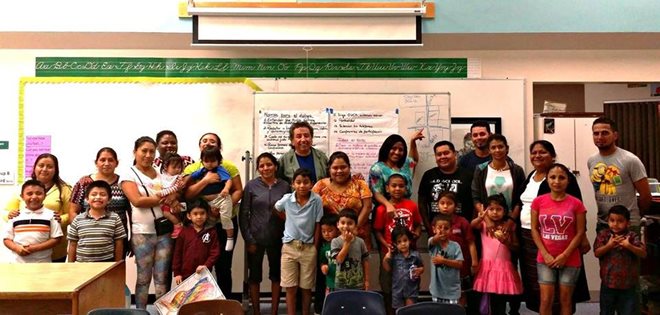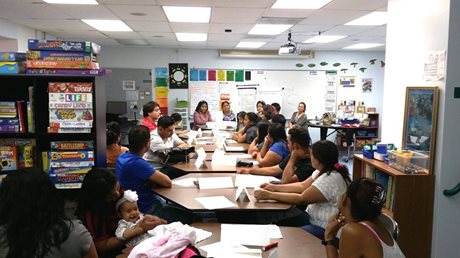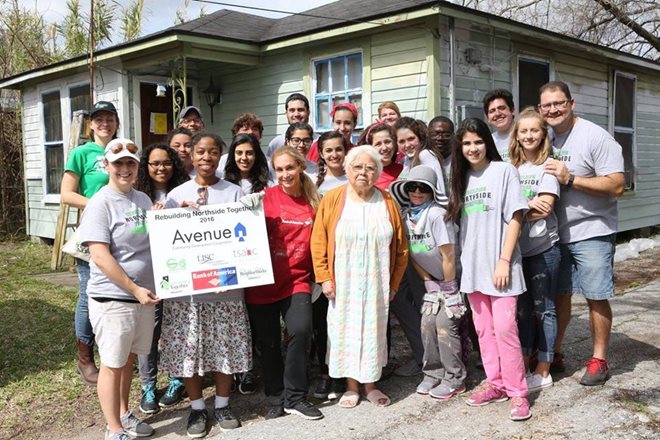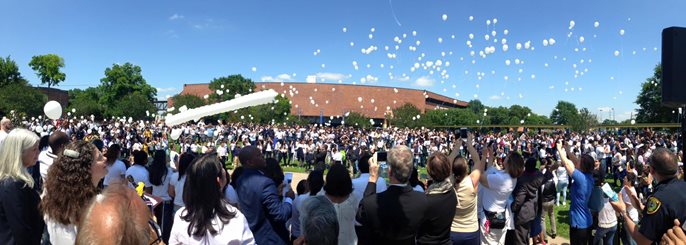 |
| An Everyday Democracy team assembled by Housing Partnership, Inc. |
Resident engagement is at the core of the NeighborWorks mission, and is essential to the success of virtually every activity conducted by organizations and institutions focusing on affordable housing, community development, public safety, education…you name it. If residents don’t get involved, or at least buy in, success simply isn’t possible.
However, all sorts of factors make resident engagement a challenging task—ranging from apathy, to hectic schedules, to division between social classes, races and cultures. And once you get residents engaged, it’s a challenge to move them from dialogue to action.
That’s a key focus of many NeighborWorks network organizations, and particularly of those who received NeighborWorks America’s Catalytic Grants. The grant program is designed to “strengthen local capacity to plan and implement comprehensive approaches to community stabilization that produce measurable gains.” Residents are key players in community stabilization.
Here are two stories of success.
Bring ‘everyday democracy’ to neighborhoods
“Resident engagement is a huge focus across all of our lines of business,” says Jaime-Lee Brown, vice president of community services at Housing Partnership, Inc. (HPI), in Florida’s Palm Beach County. “Too often, people stay within their own affinity groups, or have a difficult time coming to consensus if they ‘cross over’.”
The solution HPI found to overcome both barriers is an approach originated by an organization called Everyday Democracy: Ideas and Tools for Community Change. Founded in 1989, the organization focuses on helping communities organize to bring diverse sectors into a conversation. In 1992, in the wake of civil disturbances that followed the acquittal of police officers in the beating of Rodney King, one of the group’s principals spent significant time with community leaders from different ethnic groups in Los Angeles. That experience led her to create the organization’s first group discussion guide, this one focused on race and racism.
Since that time, the organization has broadened its work in racism, including joining the “Campaign to Combat Implicit Bias,” and expanded the issues on which it focuses—ranging from poverty to immigration to mental health. (Read more about implicit bias in our blog post about the recent symposium on diversity and inclusion.) The only requirement is that an initiating organization desires to involve a diverse group of people in a respect-based dialogue focused on joint action, says Sagacity Walker, a community assistance associate at the Connecticut-based Everyday Democracy.
HPI first experimented with the Everyday Democracy approach four years ago, using the “Strong Starts for Young Children” module to bring together various stakeholders to discuss education in 10 Palm Beach County communities with challenging child outcomes. Since then, HPI has become a member of Everyday Democracy’s “anchor network.”
 |
| An HP Everyday Democracy group in action |
With NeighborWorks America’s Catalytic Grant, HPI hosted a townhall meeting to brainstorm challenges to strengthening the community. Then, volunteers from throughout the community were sought for two, facilitated “dialogue-to-action” groups: one for Spanish-speaking residents and one for English-speaking. Over the following six weeks, each group developed trust among its members, then developed an action plan related to a chosen priority for improving the community. Finally, each group presented their proposed solutions at a second town hall meeting. HPI gave each group $750 to help implement their plan—a model somewhat similar to NeighborWorks America’s Community Leadership Institute.
“Implicit biases really come out in these groups,” comments Brown. “One schism we exposed was homeowners’ perceptions of mostly Spanish-speaking renters as being less willing to do the work of neighborhood building. But when the English-speaking group heard the Spanish members present about their ideas to improve safety in the area, they immediately wanted to participate too.”
When a group wants to participate in the Everyday Democracy process, the organization offers training at three junctures: organization/recruiting of resident participants, selection and preparation of facilitators, and action planning and implementation. A customized discussion guide is provided, along with coaching throughout the process.
Brown says that any organization considering using the Everyday Democracy approach should ask themselves these five questions to assess their “readiness”:
- Do we desire to bring about real change?
- Do we believe that an investment by stakeholders is necessary to achieve success?
- Do we believe that cross-sector engagement is essential for community-wide change?
- Are we committed to using data to set the agenda and improve over time?
- Are we committed to engaging community members as partners and producers of impact?
‘GO teams’ expand community players and develop leaders
Jenifer Wagley, deputy director of Avenue CDC in Houston, describes a similar challenge in its mostly Latino target neighborhoods.“People in our targeted neighborhoods had little understanding of what city resources they could access or how to do so. Many had become completely disconnected from public life,” recalls Wagley. “And when residents did get involved, it was always the same three or four speaking for about 30,000. It was imperative that we develop a broader base of resident involvement and leadership.”
Avenue CDC succeeded, and this is how Wagley and the rest of the team did it:
- Avenue CDC’s first action—one Wagley describes as essential—was to hire a dedicated coordinator for the targeted Near Northside and Northline neighborhoods. “This person’s job is first to organize, and then to coordinate once momentum gets going,” explains Wagley. For example, in the Northline neighborhood, Avenue CDC started with very few relationships, and now has 20 volunteer leaders to start the next step, planning.
 |
| A Rebuilding Together event organized by Avenue CDC |
- The next step is to launch a planning process. In the Near Northside community, where Avenue CDC began its efforts, it has conducted two rounds of planning, the second one five years after the first. “The first round was based mostly on ‘community wisdom’,” she says. “The results led to such amazing insights and actions that we knew the community was ready to deeper. Because of our earlier work, the second round of planninc could be more data-driven and focused on the long term—outcomes instead of output.” The process serves as a community-building tool in and of itself, and attracts the attention of politicians who allocate resources.
- It’s essential to quickly transition to action and put residents at the center. Formal civic clubs and associations had faltered in the neighborhoods, so GO teams became the action takers. The teams were formed around resident-identified interests, and staffed by those who “nominated” the priorities--ensuring passion and commitment. Today there are about 20 GO teams in the Near Northside neighborhood, ranging in focus from safety, to housing, to youth.
- Avenue CDC served as the strong, central convener that was necessary to get momentum going, but learned it can’t be the only one taking the lead. “The Quakers have a process for starting new churches; they support them almost totally the first two years, and then they spin off and become independent. We need to get good at doing the same thing, both sharing the convening role with partners and helping the participants take responsibility,” says Wagley, who is an ordained minister as well as a community organizer trained in the model of outreach pioneered by the legendary Saul Alinsky.
 |
| Residents came together to launch balloons in honor of the murdered little boy. |
In addition, residents wrote a letter to the mayor outlining their safety concerns and recommended actions, and published an op-ed.
“This was community solidarity and collective positive action at their best,” Wagley says. “It would never have been possible if residents hadn’t come together previously to build trust and learn they can make a difference.”

